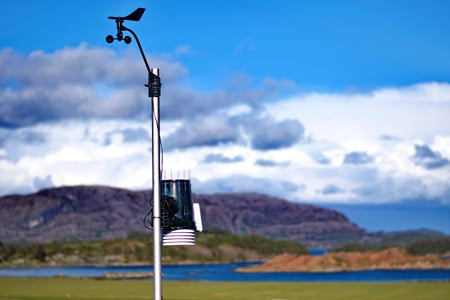The aim of this article is to develop the design of the weather station to show the interaction between the data collection subsystem and the instruments that collect weather data. Use sequence diagrams to show this interaction.
You can use the following information to design a weather station.
1. First identify the possible components and tasks of a weather information.
2. Primary task of a weather station is to monitor and record weather conditions.
3. Weather conditions depend on numbers of atmospheric parameters. Some of possible such parameters are atmospheric temperature, wind conditions, air pressure, rainfall status, sky conditions, precipitation etc. Various properties of these parameters need to be monitored and measured in order to predict weather. Different properties that can be measured are:
a) Temperature - atmospheric, soil etc.
b) Wind - direction, speed etc.
c) Precipitation - humidity, evaporation levels etc.
d) Rainfall - No rain, heavy, drizzling, thunderstorm, moderate etc.
e) Sky - Clear, cloudy, partly cloudy, overcast etc.
4. You will need necessary instruments that will monitor and measure the above mentioned properties of corresponding parameters. Normally used instruments are:
a) Thermometer - for temperature
b) Barometer - for air pressure
c) Rain gauge - for rainfall
d) Wind vane - for wind direction
e) Wind anemometer - for wind speed
f) Evaporimeter - for evaporation levels
g) Humidity sensor - for humidity levels.
5. Once, parameter to monitor, corresponding properties to measure, respective instruments are set up, then it is very much necessary to record the measured information. For this, a log termed as Weather Information Log, needs to be created and maintained to record information on daily, weekly and monthly basis etc.
Based on the above information, you can specify the design of weather station in required notation. A reference sequence diagram for temperature measurement is given below:
What is a weather station?
A weather station is a collection of instruments that measure atmospheric conditions to help study the weather and climate of a specific location. Most weather stations will measure temperature, humidity, barometric pressure, wind speed and direction, and rainfall.
An official weather station is used for aviation, military, and meteorological purposes, while personal home weather stations are for private or, in some cases, research use. Weather enthusiasts, farmers, and schools are the most common owners of personal weather stations.
Design of a Weather Station with Sequence Diagrams
1. First identify the possible components and tasks of a weather information.
2. Primary task of a weather station is to monitor and record weather conditions.
3. Weather conditions depend on numbers of atmospheric parameters. Some of possible such parameters are atmospheric temperature, wind conditions, air pressure, rainfall status, sky conditions, precipitation etc. Various properties of these parameters need to be monitored and measured in order to predict weather. Different properties that can be measured are:
a) Temperature - atmospheric, soil etc.
b) Wind - direction, speed etc.
c) Precipitation - humidity, evaporation levels etc.
d) Rainfall - No rain, heavy, drizzling, thunderstorm, moderate etc.
e) Sky - Clear, cloudy, partly cloudy, overcast etc.
4. You will need necessary instruments that will monitor and measure the above mentioned properties of corresponding parameters. Normally used instruments are:
a) Thermometer - for temperature
b) Barometer - for air pressure
c) Rain gauge - for rainfall
d) Wind vane - for wind direction
e) Wind anemometer - for wind speed
f) Evaporimeter - for evaporation levels
g) Humidity sensor - for humidity levels.
5. Once, parameter to monitor, corresponding properties to measure, respective instruments are set up, then it is very much necessary to record the measured information. For this, a log termed as Weather Information Log, needs to be created and maintained to record information on daily, weekly and monthly basis etc.
Based on the above information, you can specify the design of weather station in required notation. A reference sequence diagram for temperature measurement is given below:


